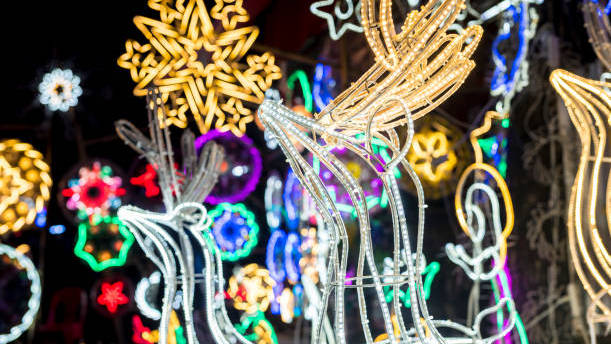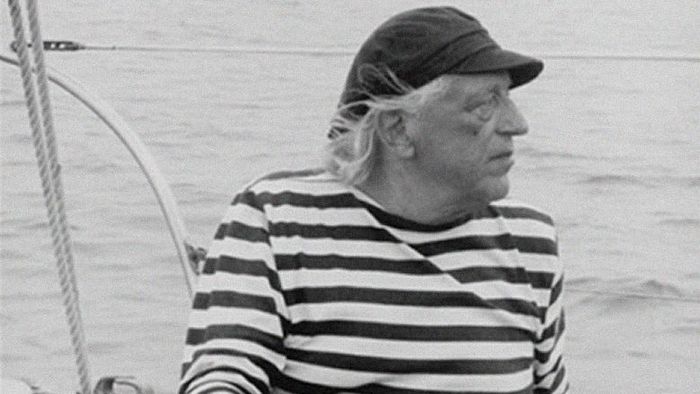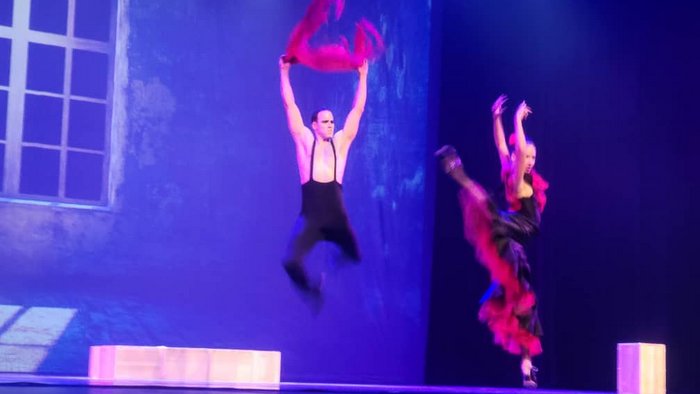I understand the ongoing bombardment on the relevance of contemporary art as we knew it because right here the first question pops up: and how did we know it? How can we prefigure a minimal assortment on the current content of contemporary art when there’s not even consensus on the variants wielded by the notion until now? What allegedly stalemate paradigm or model are we reacting against? Was there any uniformity in that model?
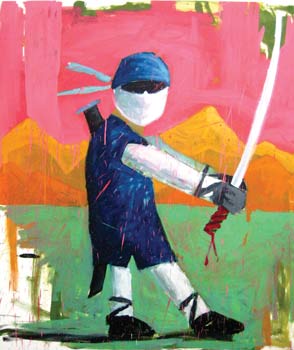 In principle, it’s crystal-clear that the contemporary cannot be mixed up with the modern or the coeval. There are coeval products that break free from contemporary sensitivity. The contemporary implies a certain selection, a field, a distinctive factor; the coeval is nothing but coexistence with the times. If we manage to separate the contemporary from the Modern only to link it to the modern, we’ll immediately notice that even the modern –not just the Modern– is widely interested in the sense of topicality, say, in an artistic way. From Baudelaire to Pollock, the modern can be construed as a blowing wind of today’s times, as something new, as a determining vector. The topical does not necessarily informs the contemporary. Even today, as part of the recent past, we manage to cotton on to the contemporary in the sense of a jaunty and substantial fleeting trip through the history of art, through the styles: it seems that the struggle between History and the present has been broken for good, when the past –viewed as an intimate concept– enters organically into the passing days. The new could be the old. History does not exist only to be pegged down as troublesome. In the past, it used to be incorporated, devoured and shared. We have missed the grave criterion History used to be looked at with.
In principle, it’s crystal-clear that the contemporary cannot be mixed up with the modern or the coeval. There are coeval products that break free from contemporary sensitivity. The contemporary implies a certain selection, a field, a distinctive factor; the coeval is nothing but coexistence with the times. If we manage to separate the contemporary from the Modern only to link it to the modern, we’ll immediately notice that even the modern –not just the Modern– is widely interested in the sense of topicality, say, in an artistic way. From Baudelaire to Pollock, the modern can be construed as a blowing wind of today’s times, as something new, as a determining vector. The topical does not necessarily informs the contemporary. Even today, as part of the recent past, we manage to cotton on to the contemporary in the sense of a jaunty and substantial fleeting trip through the history of art, through the styles: it seems that the struggle between History and the present has been broken for good, when the past –viewed as an intimate concept– enters organically into the passing days. The new could be the old. History does not exist only to be pegged down as troublesome. In the past, it used to be incorporated, devoured and shared. We have missed the grave criterion History used to be looked at with.
Indeed, literature provides two fundamental senses to understand the contemporary art: a broad, far-reaching judgment, and a more restrained one. Some authors refer to “contemporary art” as the spirit that prevailed through the entire 20th century as a reaction to the classical model that came into being with the Renaissance and that lorded it in the late 19th century. For these authors, the critical, skeptic, inquiring and renovating critique tells apart this trend-laden, movement-rich group so full of orientations and currents that embraced a whole century and remains in place today riddled with flak and impugnation. Tired. This “avant-garde tradition” –a nice paradox wherever it was– that includes historic avant-gardism (the School of Paris and its surroundings), the moving of the artistic center to New York, the neo avant-gardism, the trans-avant-gardism and even –why not?– the new expressionism, contribute to processes dating back from the 19th century or even before that: the importance it acquires through romantic painting, the realm of subjectivity –light, color, expression– over the kingdom of the rigorous classic composition, then moving on to the 1960s and 70s by the hand of impressionism, the glimpses at painting’s material nature, research and concentration of cultural forms –today we call it an epistemological dimension of light– that wraps up the full autonomic project of art with the experience of esthetic absoluteness trialed by abstraction as an apparently complete breakaway from the era of analogy and similarity, in relation with illusionist representation, and above all, with the world’s mimetic emulation.
For other authors, contemporary art emerges with the second postwar, precisely as one of the indicators of Modernity boredom. Art in the second half of the 20th century refuses to sign up for the linguistic dash race summoned by historic avant-gardism: the change, the new, renovation, the original will be no longer esthetic emblems to be considered, but rather all the way around: they are seen as bad habits to be lampooned. Let’s recall two key moments within that mud-slinging period: Bonito Oliva’s denunciation of linguistic Darwinism, and the esthetic democratization expressed by the notion of the sufficiently good artist launched by Donald Kuspit. I don’t believe in the idea of “contemporary art” that emerged out of the second postwar there’s room for talking about “postmodern art”, a syntagm that continues to be a ridiculous concept to me. If the concept of art is constantly submitted to discussions –what are we going to choose instead, the art that can be seen as a paradigm of Modernity? Historic avant-gardism as the pinnacle of condensation, as the modern ideal? The art that matches modernism in architecture (for instance, the boulevard, the highway, the functional city, the Bauhaus) or even the so-called poetic modernism?-so is that presumption of “postmodern art”, a bouquet, a knot, a throne that looks like an irony in the face of postmodernism’s own resistance to generalizations and abstractions, to the systematizations that go in sync with modern, totalitarian and Kantian reasons. That “postmodern art” thing would be a tough, misleading proposition that tries to splice up whatever escapes convergence and the centripetal –something that was already there, though not exactly as a cultural domain, during the years of the historic avant-gardism.
However, the idea of contemporary art is a soft notion, a far cry from the historic style, from axioms, dogmas and tyranny. It goes into sensitivity rather than a repertoire; into an attitude or spirit rather than into one or more codes. Despite the persistent structural gesture, that can be understood as lack of rigor at a point in which lack of rigor means to ignore both the nature and dynamics of the artistic processes that not always can be worked out with the help of a couple of theorems, of hard apothegms. At least the author of these lines has felt so deeply –amidst the recurrent preoccupations of the times– the need to call the demise of contemporary art. That first-ever modernism, so used to deceases, that takes after something out of the same stale modernity I intended to react against. It’s like asking ourselves for the sake of asking, what’s contemporary art? What does contemporary art mean or imply today? Or this other question that’s been wielded in a number of international symposia: what does contemporary art mean? I don’t think it’s all about the death of something but rather the attempt to comprehend the content-otherness of a notion that constitutes a gain harvested in cultural history, in the learning process, in the tools of interpretation, in the imaginaries that delve into art. The “contemporary art” syntagm has panned out to be a useful convention, among other things.
No matter how little we might like it, but the fact of the matter is that the thesaurus of knowledge is accumulative: the idea of contemporary art was not exactly a timely finding for the second postwar, but rather a methodological warning, an instrumental conquest that from that moment onward allowed us to understand a sea change in the coordinates of artistic creation whereby people are supposed to look up at those things that render, expand and interpret the sensitivity that distinguishes or summarizes an epoch; a sensitivity that, as we have noticed, could be history-oriented in itself, let alone as diverse and uncatchable as it can get. Of course: that sensitivity does not remain undisturbed. To begin with, it fights back the regency or hegemony criterion; it deals with the dynamics of the market; it resists those forces perennially rather than skillfully “adapting itself” to them, as some scholars had pointed out. There’s a 60-something-year gap between the postwar contemporary art and the year 2010; there are some major divides in the ways of coping with creation and blowing up the lineal relationships between texts and contexts, between artistic data and the ambiences.
Which does not mean that we should necessarily give up on one of the many possibilities the art got a hold on to construe its own future. We must shake that off, that is, turn it upside down without playing into the hands of the terminological Darwinism that believes that a single twist of the label is good enough to understand how much has been changed or tinted in a different hues. Were we going to give up on all nomenclature possibilities along the way –there’s no doubt I’m referring here to the narrowest possibilities that bother even the least democratic people– then there’ll be no History. That means, in precisely soft terms, that there’ll be no possibility of writing. That was one of the main failures of postmodernism: it failed to read between the lines and figure out that the postulate on the end of History could be rapidly incorporated –institutionally– as just another moment of History or, at least, of writing. Man didn’t die, or the individual or the author or the possibility of style. They simply grew older; models that were every so often autarchic and used to rule out man, the individual, the author and the style. What we actually learned along the way was perhaps that there’s no such thing as writing, but writings, possibilities and conjectures.
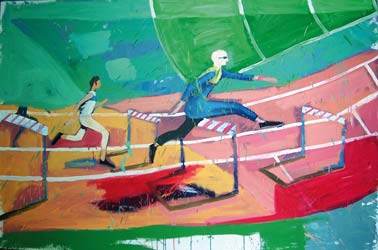 Just another criterion that tends to disavow contemporary art, based on the concrete praxis of 60 years of ruptures that do not want to be so, is the reference to huskiness, the commercial truculence, the decaying theatricality, the no-tell wink at the market where there was room for challenge, the pathetic decadence of some artists who see the democratic beam of contemporariness, the kindhearted opportunity to strip down their egos. Come to think of it, this kind of observation on stridency was what Duchamp had endured long ago. And so did Picasso, the beasts, the supremacists, not to mention Kosuth, Vito Acconci or Beuys. The new art –the one that can chip in a different kind of info on creation, no matter how hard it might try to run away from the little vain aspiration for the new– has always brought about adverse rumors, deconstruction with strings attached, off-key irony, the practice of keeping the peel and throwing away the meat. In so many strident artists, from Dali to Cattelan, is there just stridency or are there some heavy gains concealed behind that stridency and the need for rupture? Clothes do not make the artist either.
Just another criterion that tends to disavow contemporary art, based on the concrete praxis of 60 years of ruptures that do not want to be so, is the reference to huskiness, the commercial truculence, the decaying theatricality, the no-tell wink at the market where there was room for challenge, the pathetic decadence of some artists who see the democratic beam of contemporariness, the kindhearted opportunity to strip down their egos. Come to think of it, this kind of observation on stridency was what Duchamp had endured long ago. And so did Picasso, the beasts, the supremacists, not to mention Kosuth, Vito Acconci or Beuys. The new art –the one that can chip in a different kind of info on creation, no matter how hard it might try to run away from the little vain aspiration for the new– has always brought about adverse rumors, deconstruction with strings attached, off-key irony, the practice of keeping the peel and throwing away the meat. In so many strident artists, from Dali to Cattelan, is there just stridency or are there some heavy gains concealed behind that stridency and the need for rupture? Clothes do not make the artist either.
The easiest and comfiest thing to do today is to peel off the contemporary art label. I wish the complexity surrounding the uncertainty artistic culture is shrouded by could be worked out with a new death certificate. Quite of number of us –as Peter Greenaway put it years ago as he broached with sarcasm the demise of cinema– beam with a broad smile and shout to the top of our lungs: “Contemporary Art has died; long live Contemporary Art.” And just notice that the ongoing controversy allows me to anticipate just another topic for the coming issue: it’s easier and comfier now to break free from the convention than dominating it with subtleness and character. Weren’t we sick and tired of so many derogations?
Just another criterion that tends to disavow contemporary art, based on the concrete praxis of 60 years of ruptures that do not want to be so, is the reference to huskiness, the commercial truculence, the decaying theatricality, the no-tell wink at the market where there was room for challenge, the pathetic decadence of some artists who see the democratic beam of contemporariness, the kindhearted opportunity to strip down their egos. Come to think of it, this kind of observation on stridency was what Duchamp had endured long ago. And so did Picasso, the beasts, the supremacists, not to mention Kosuth, Vito Acconci or Beuys. The new art –the one that can chip in a different kind of info on creation, no matter how hard it might try to run away from the little vain aspiration for the new– has always brought about adverse rumors, deconstruction with strings attached, off-key irony, the practice of keeping the peel and throwing away the meat. In so many strident artists, from Dali to Cattelan, is there just stridency or are there some heavy gains concealed behind that stridency and the need for rupture? Clothes do not make the artist either.
The easiest and comfiest thing to do today is to peel off the contemporary art label. I wish the complexity surrounding the uncertainty artistic culture is shrouded by could be worked out with a new death certificate. Quite of number of us –as Peter Greenaway put it years ago as he broached with sarcasm the demise of cinema– beam with a broad smile and shout to the top of our lungs: “Contemporary Art has died; long live Contemporary Art.” And just notice that the ongoing controversy allows me to anticipate just another topic for the coming issue: it’s easier and comfier now to break free from the convention than dominating it with subtleness and character. Weren’t we sick and tired of so many derogations?

